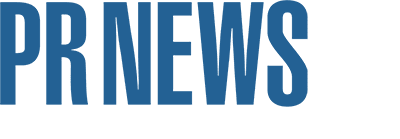
The PR industry needs to realize that it cannot continue to reach its target audiences if it remains hyper-fixated on the same old channels.
As journalists look for new ways to showcase their work and break away to new platforms, PR pros will need a lifejacket to navigate the ever-growing number of distribution channels, form better media relationships and hunt for the right opportunities in a sea of irrelevant ones.
It’s time we recognized what PR is best at and where to leverage AI.
Finding Relevant #journorequests in Time
No doubt about it, AI is better at tracking the constant stream of journalist requests that pop up across different platforms—and that’s a good thing.
PR pros are no longer simply monitoring Help A Reporter Out (HARO) or scrolling X for #journorequests. Now, eyes need to be on Qwoted, Substack, LinkedIn, Peter Shankman’s SOS and more. This level of media monitoring takes time, and even when we find the right commentary opportunities, the chances of our pitch standing out drop dramatically once a journalist has received a handful of responses and has what they need.
AI can change all that. It can help communicators stay on top of journalists’ real-time needs and respond with immediacy to what they are looking for, giving back hours normally spent scanning platforms. Tools like Help Reporters Out (not to be confused with HARO), use AI to support PR pros by aggregating relevant calls for commentary in one place, saving time that can be reinvested in crafting better, differentiated pitches. Most importantly, the focus can be directed at building real connections with journalists and providing clients an opportunity to show up authentically in the process.
Perhaps it's the tool that allows communicators to return to what brought many of us to PR in the first place—helping journalists tell meaningful stories—not just the stories our clients want to tell but the ones that add value to readers.
Matching the Media’s Editorial Calendar
As the news cycle evolves, so do media outlets’ editorial structures and content calendars.
Manually searching for the right outlets, digging through Google results, and scouring media sites for editorial clues on the best outlets to pitch is time-consuming and inefficient. Letting AI keep track of outlets’ yearly, monthly and weekly content themes, backed by the data of articles that are being covered, helps us pitch at the right moment. Some notable tools helping PR pros with deep research needs include OpenAI, Gemini 2.0 and Perplexity. Instead of flooding journalists with off-target pitches, communicators can ensure an alignment with editorial priorities before a topic is done to death.
While AI tools aren’t perfect yet, this technology has already made great strides in recognizing outlets’ editorial needs, from which publications are accepting guest posts to shifting coverage topics. Media monitoring goes beyond only guidelines. It can also look into sentiment analysis utilizing AI with tools like Talkwalker, Brandwatch and NewsWhip, which are helping PR pros stay abreast of what is circulating in the media. This way, we’ll be able to stay ahead of trends and proactively deliver insights to journalists that their readers want.
Understanding the Media’s Past and Present Goals
AI is also much better at keeping up with media movements. As journalists move from one channel or outlet to another, it can slip from a PR pro's radar.
There are resources trying to address the situation, like Talking Business News, which allows us to follow reporters’ moves and shifts in the media. But as the list grows and journalists go independent and create new knowledge hubs, we are fooling ourselves if we think we’ll catch every changeover or newcomer’s “I have personal news” post on social media.
AI is invaluable in identifying emerging journalists and tracking where established voices are moving to. Tools like Dazzle, Muck Rack and Meltwater allow PR professionals to research journalists wherever they may be—newsletters, outlets, podcasts and more. That way, communicators can dedicate their time to supporting journalists making these transitions and help keep up with their needs.
Ultimately, how we define credible media opportunities and distribution channels will shape PR strategies moving forward. There is a learning curve in educating clients on new, meaningful spaces that will move the needle, but to set a new standard, we must always know who is leading the conversation and where in real-time.
AI may be Everyone’s Saving Grace
It’s time for the communication industry to reboot how it approaches PR, because in the next era of digital storytelling, strong media connections will be pivotal to both reporters and PR pros. It may sound ironic, but AI gives us the opportunity to improve relationships with journalists—if used properly. We need to actively contribute to shaping these tools in order to serve the industry, and not leave it in the hands of those unfamiliar with the nuances of PR and media.
Ayelet Noff is CEO and Founder of SlicedBrand, a global tech PR agency & CEO and Co-Founder of Dazzle, an AI search agent that matches PR pros with the right journalists.
